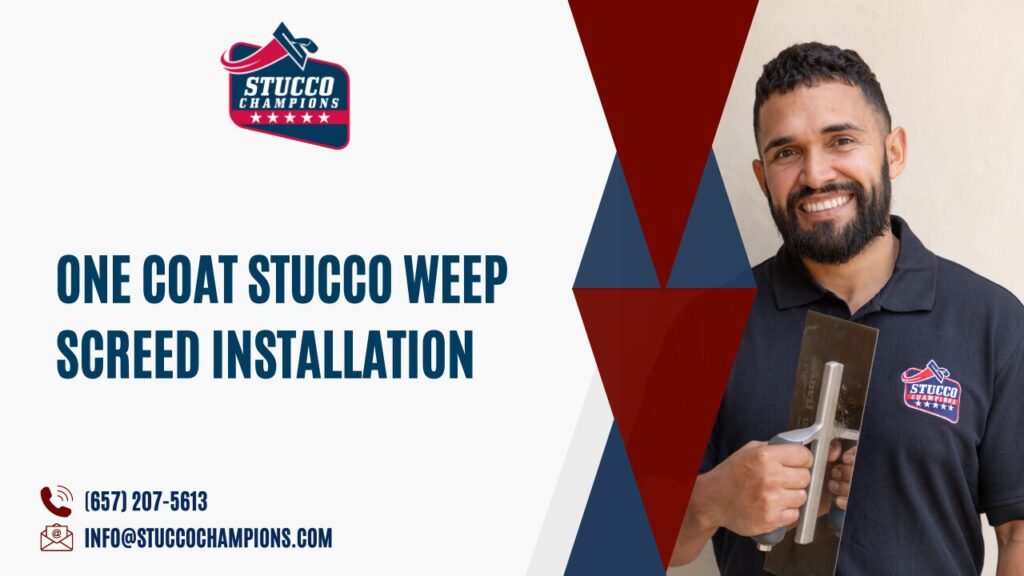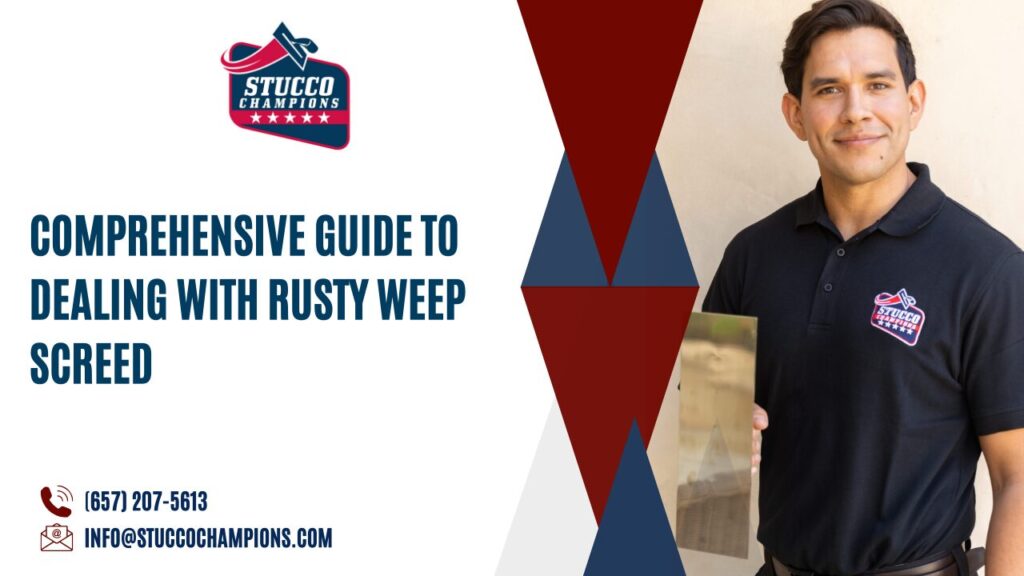Installing a one coat stucco weep screed is a critical step in ensuring the durability and effectiveness of a stucco wall system. The weep screed serves as a vital component, allowing water that gets behind the stucco finish and base coats to drain out. This article is a comprehensive guide, written by an experienced professional in stucco installation, to assist both DIY enthusiasts and skilled installers in executing this task with precision and safety.
Tools and Materials
To start, gather the necessary tools and materials:
- Metal cutting shears (M3’s recommended)
- Speed square
- Marking tools (sharpie, razor knife, etc.)
- Staple gun (wide crown 1 1/4″ minimum length) or hammer and nails
- Weep screed
Cutting and Joining Corners
Inside Corners:
- Measurement and Marking: Measure 1 3/8″ along the front lip of the weep screed and mark. Draw a 45-degree line to the back flange.
- Cutting the Angle: Cut the small front lip straight down, then along the 45-degree line.
- Alignment: Repeat on the opposite end for a mirrored angle, ensuring both pieces align perfectly.
Outside Corners:
- Marking for Outside Corners: Mark the back flange at 1 3/8″ and draw a 45-degree line in the opposite direction.
- Cutting Process: Follow the marked line, cutting the back flange and the small front lip.
- Completing the Corner: Repeat on the opposite end of another weep screed piece to form a complete outside corner.
Joining Weep Screed Pieces
- Cutting a Notch: Cut a “V” notch in the new piece for overlap.
- Assembling: Bend the front lip down slightly and slide the new piece over the existing one for a seamless join.
Installation Process
- Starting Point: Begin at an outside corner. Cut the corner as previously described and ensure the bottom of the weep is approximately 1″ below the sheathing for optimal water drainage.
- Securing the Weep Screed: Position the weep screed and either nail or staple it in place at the top corner, focusing on the upper middle area of the weep screed flange.
- Continuing Installation: Secure the opposite end, maintaining a consistent 1″ drop. Follow a nailing or stapling pattern for the entire length.
Expert Insights and Best Practices
With years of experience in stucco installation, it’s essential to emphasize specific measurements and methods that align with local building codes and manufacturer guidelines. For instance, the positioning of staples or nails should be done with precision, keeping in mind the structural aspects of the building.
Safety and Precautions
Safety is paramount. Always wear protective gloves and eye gear during the installation process. While this guide provides a thorough overview, consulting a professional is advisable for complex projects.
Understanding Technical Terms
For clarity, here are simple definitions of some technical terms used:
- Flange: A projecting flat rim or rib on the weep screed, used for strength or attachment.
- Sheathing: A protective covering layer on the building’s exterior wall.
Potential Risks and Troubleshooting
Improper installation of weep screed can lead to serious issues like water damage or structural problems. If you encounter difficulties, review the steps carefully and check for any misalignments or improper cuts.
This guide aims to provide clear, detailed instructions for installing a one-coat stucco weep screed. By adhering to these guidelines and considering the expert advice and safety precautions, you can ensure a successful and long-lasting installation. For more detailed information, refer to local building codes and specific product instructions.
Last week, we shared Understanding Weep Screed Installation for 3 Coat Stucco Systems, detailing the proper techniques and importance of this component in ensuring a durable and moisture-resistant finish. If you’re looking to perfect your stucco installation process, don’t miss the valuable insights in this post!
—




